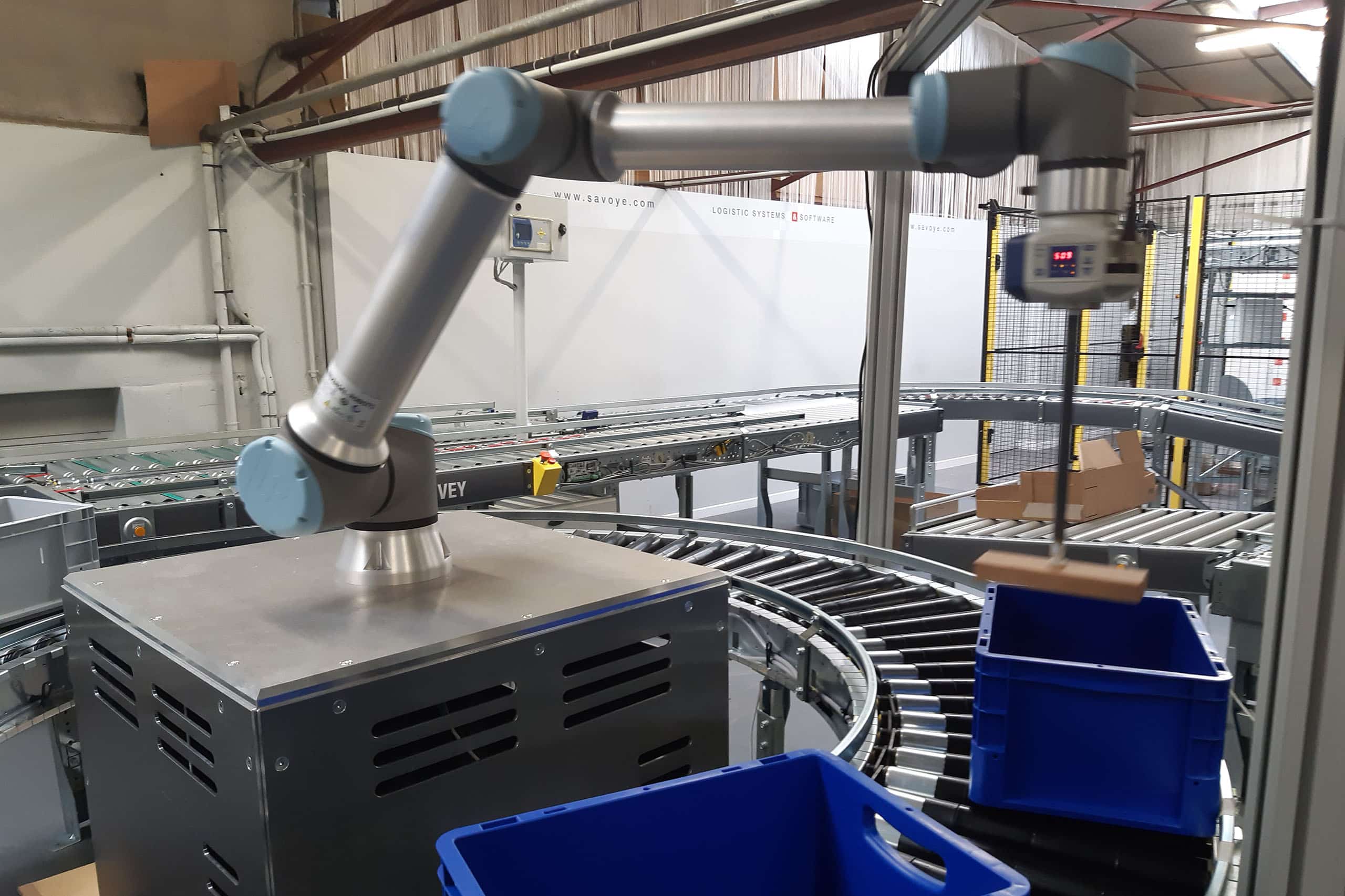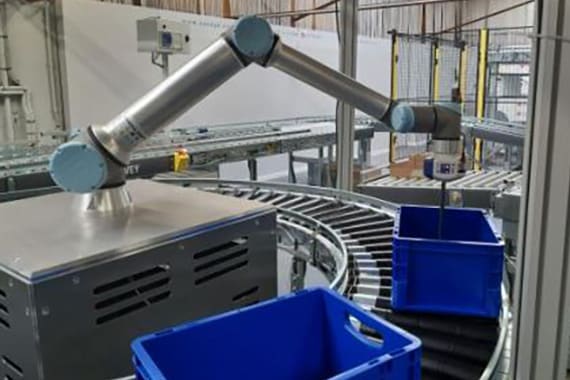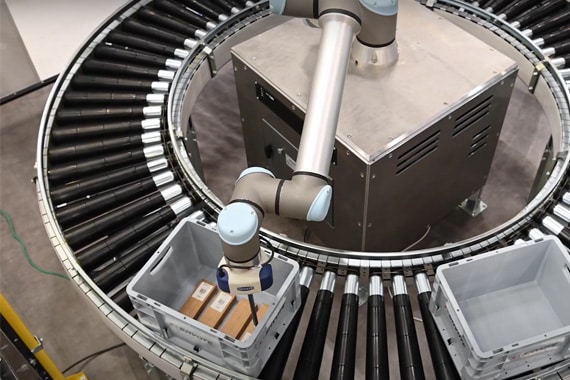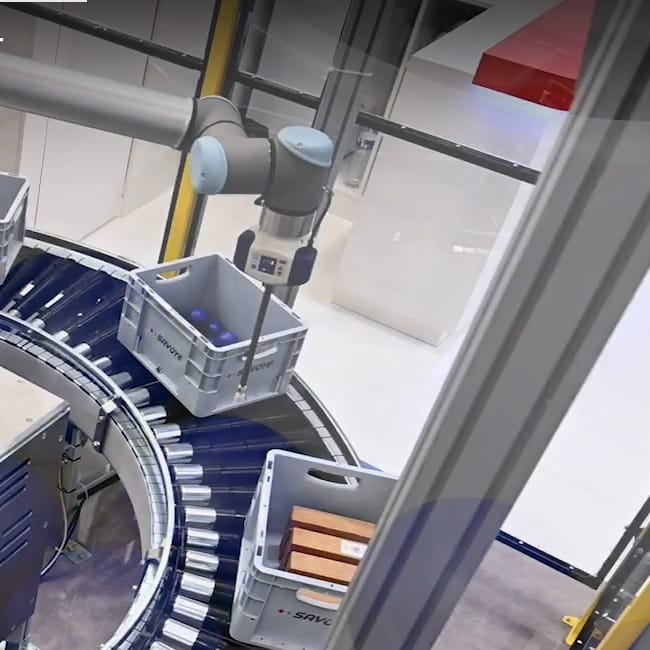WHAT IS A PICKING ROBOT?
Although the element that catches our attention is the robotic arm, the picking robot or item picking robot, consists of several elements:
- An integration environment. Both hardware and software, the robot’s environment allows it to operate under the best conditions. Thanks to a dedicated architecture, we organize the arrival and departure of bins and cartons, so as to optimize the operation of the robot, and allow it to work continuously.
- The robotic arm itself. Chosen for its speed and precision, the robotic arm, coupled with a gripper, picks and places the products.
- The vision system. These are the eyes of the system. Using machine learning algorithms, a branch of artificial intelligence, the vision system identifies the products to be collected (size, weight, color, rigidity, texture, etc.) quickly and reliably without human intervention thanks to a self-learning system. Highly accomplished, it can integrate new products continuously 24/7 with a computational time of less than a second





